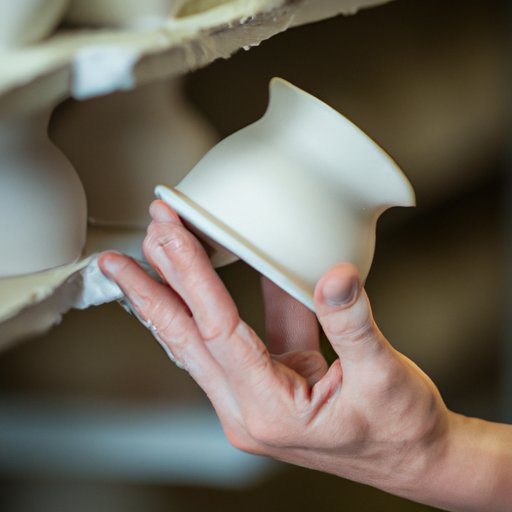I. Introduction
Are you looking for elegant and sophisticated dinnerware for your home or next special occasion? Look no further than bone china! In this article, we will explore the fascinating history and crafting process of bone china, as well as its unique characteristics, uses, and care requirements. Whether you’re a seasoned collector or new to the world of fine dinnerware, you’ll find valuable information to enhance your appreciation for this beautiful and durable material.
II. The Elegance of Bone China: Understanding Its Origins and Crafting Process
Bone china was first invented in England by Josiah Spode in the 1790s. Spode discovered that adding a mixture of bone ash, feldspar, and kaolin to porcelain clay resulted in a much stronger and more translucent material than porcelain alone. This gave birth to what we now know as bone china, which quickly became popular thanks to its beautiful appearance and durability.
To create bone china, the raw materials are mixed together into a paste, which is then molded and fired at high temperatures. After the initial firing, a glaze is applied and the piece is fired again. The result is a thin but strong and lustrous material that is perfect for fine dinnerware.
III. What Makes Bone China Unique? Discovering Its Characteristics and Uses
Bone china is known for its unique properties, which include a thin and lightweight feel, translucency when held up to light, and a delicate but strong composition. It also has a distinctive ivory color that is beautiful in its simplicity and versatility.
Compared to other types of dinnerware, such as porcelain or stoneware, bone china is considered the most elegant and refined option. It is often used for formal occasions, such as weddings, fine dining events, and holiday gatherings. However, it can also be enjoyed every day as a luxurious and high-quality addition to your regular tableware collection.
IV. The Difference Between Bone China and Porcelain: A Comprehensive Guide
Many people confuse bone china with porcelain, which is understandable given their similar appearance and use in fine dinnerware. However, there are important differences between the two materials.
Porcelain is made from a combination of kaolin, feldspar, and quartz, while bone china contains bone ash in addition to these ingredients. This gives bone china a more delicate and refined appearance, as well as greater strength and resistance to chipping or cracking. Porcelain is generally thicker and heavier than bone china, and is often used for more casual or rustic table settings.
V. How to Care for Your Bone China: Tips and Tricks to Maintain Its Quality
To keep your bone china in top condition, it is important to handle it with care and follow some basic guidelines for cleaning and storage. Always hand wash bone china using mild soap and warm water, and avoid abrasive sponges or cleaning products. Never use the dishwasher or microwave with bone china, as the high temperatures and harsh detergents can cause damage or discoloration.
If you do purchase a dishwasher-safe bone china set, be sure to choose a low-temperature or gentle wash cycle, and avoid using citrus-based detergents or rinse aids. When storing bone china, use soft cloth or felt dividers to prevent scratching or chipping. And if you do experience a mishap, such as a small chip or crack, don’t worry – there are professional restoration services available that can restore your bone china to its original quality.
VI. A Brief History of Bone China: From Its Inception to Modern Day Use
Bone china has a rich and varied history, from its beginnings as a relatively unknown material in the late 18th century to its current status as a coveted and luxurious type of dinnerware. Throughout the 19th and 20th centuries, bone china was particularly popular among wealthy families and was often used for important events such as weddings and fine dining parties.
Today, bone china remains a popular choice for fine dinnerware and is enjoyed by people all over the world. Many contemporary designers are also creating new and innovative designs that incorporate bone china, both for functional tableware and as decorative pieces.
VII. Conclusion
Now that you know more about the elegance and durability of bone china, it’s time to consider adding it to your own collection. Whether you choose a classic design or something more modern and innovative, you’ll be able to enjoy the unique beauty and properties of bone china for years to come. Just remember to treat your bone china with care and follow the guidelines for cleaning and storage, and it will remain a cherished part of your home for generations.
